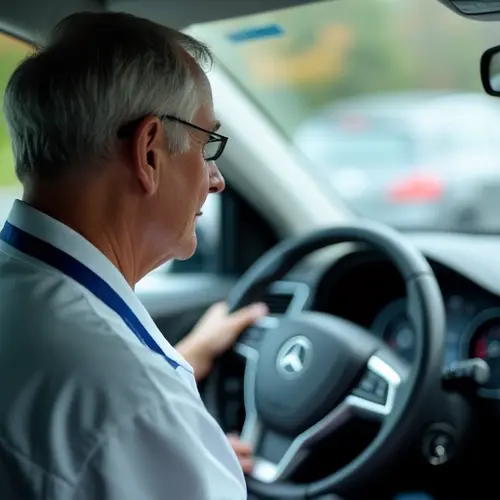EU approves major driving license reforms including digital licenses, extended validity to 15 years, mandatory medical exams, cross-border enforcement of driving bans, and stricter rules for new drivers to improve road safety.

Major Overhaul of EU Driving License System
The European Parliament has given its final approval to sweeping reforms of the European driving license system, introducing a digital driving license and implementing significant changes aimed at improving road safety across the bloc. The new legislation represents the most comprehensive update to EU driving regulations in decades and comes as the EU continues its push toward 'Vision Zero' - the ambitious goal of eliminating road fatalities by 2050.
Digital Transformation and Extended Validity
One of the most notable changes is the introduction of a digital driving license that will be accessible via smartphone. This modern approach will run alongside traditional physical licenses, giving citizens the flexibility to choose their preferred format. The validity period for car and motorcycle licenses will also be extended from the current 10 years to up to 15 years in most member states, though individual countries can choose to maintain shorter periods.
'Burgers in heel Europa zullen rechtstreeks profiteren van deze tastbare verbeteringen,' said Jutta Paulus, the European Parliament's driving license rapporteur, emphasizing the direct benefits citizens will experience from these reforms.
Enhanced Safety Measures and Training
The reforms place significant emphasis on improving road safety through enhanced training and testing requirements. Aspiring drivers will face more comprehensive theory exams that specifically test knowledge of traffic risks, including blind spot awareness, the dangers of mobile phone use while driving, and protection of vulnerable road users like pedestrians and cyclists.
All new applicants must now undergo medical examinations before receiving their licenses, including checks for cardiovascular diseases and vision tests. These medical requirements will also apply to drivers seeking license renewals, ensuring ongoing fitness to drive.
Cross-Border Enforcement and Penalties
A groundbreaking change allows for EU-wide driving disqualifications when serious traffic offenses are committed. This means that drivers who commit offenses like driving under the influence or causing accidents resulting in death or injury can have their driving privileges revoked across the entire European Union.
'Vandaag is een belangrijke stap vooruit voor de verbetering van de verkeersveiligheid. Een sterker en doeltreffender systeem voor toezicht en handhaving zal ongevallen helpen voorkomen en levens helpen redden,' stated Matteo Ricci, the parliamentarian reporting on driving disqualifications.
This addresses a significant gap in enforcement where approximately 40% of driving offenses committed abroad previously went unpunished.
Stricter Rules for New Drivers
Beginning drivers face stricter regulations under the new framework. Those with less than two years of driving experience will face higher penalties for offenses like driving under the influence and failing to wear seatbelts. The legislation also introduces a mandatory two-year probation period for all new drivers across the EU.
Seventeen-year-olds will now be able to obtain driving licenses throughout the EU, though they must be accompanied by a certified coach until they turn 18. This system has already proven successful in countries like the Netherlands, where it was implemented in 2016 following a successful pilot program.
Netherlands as a Forerunner
Several of the new EU regulations have been in place in the Netherlands for years. The country's beginner driver system already designates drivers as 'beginners' for five years after obtaining their license, compared to the EU's new two-year standard. The accompanied driving system for 17-year-olds has been operational since 2016 and has demonstrated positive safety outcomes.
Member states now have three years to implement these new regulations into their national legislation, marking a significant step toward harmonized driving standards across the European Union while maintaining the flexibility for countries to adapt certain provisions to their specific national contexts.

 Nederlands
Nederlands
 English
English
 Deutsch
Deutsch
 Français
Français
 Español
Español
 Português
Português









